The Bubble Wrap Keyboard
Modern keyboards are efficient, durable... and kinda boring. They're lifeless tools with almost no satisfying feedback. This page is about the antidote, a keyboard designed to be temporary, destructive, and a whole lot of fun to use.
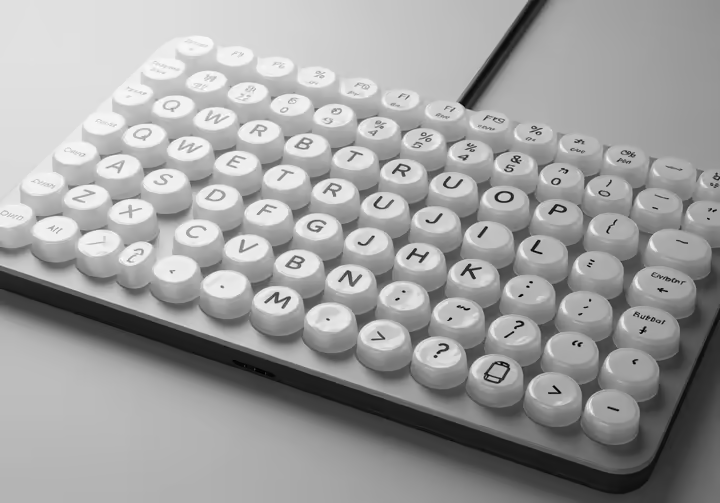
The Big Idea: A Keyboard You Can Destroy
Regular keyboards are built to last for millions of quiet clicks. This makes them feel sterile and disconnected from the words you’re writing. The whole design is focused on business goals like product lifespan, not on making the user feel anything.
Frustrated by this tactile boredom, Dr. Alistair Finch founded the Pneu-Tactile Institute of Cupertino. His big idea came not from a lab, but from unboxing some equipment. As he popped the bubble wrap, he realized typing should be a temporary, satisfying, and audibly destructive act.
This led to the Bubble-Based Input Paradigm. The main rule, each key can only be used once. This forces you to be more deliberate and thoughtful, making you value every single character you type.
How It Works: The Science of the Pop
The keyboard’s experience comes from a special sensory feedback called Pneumatic-Haptic Feedback. Basically, your satisfaction is tied to the volume of air displaced when you pop a bubble. That "pop" creates a tiny pressure wave you can feel in your fingertip, a much richer feeling than the simple buzz from a phone motor.
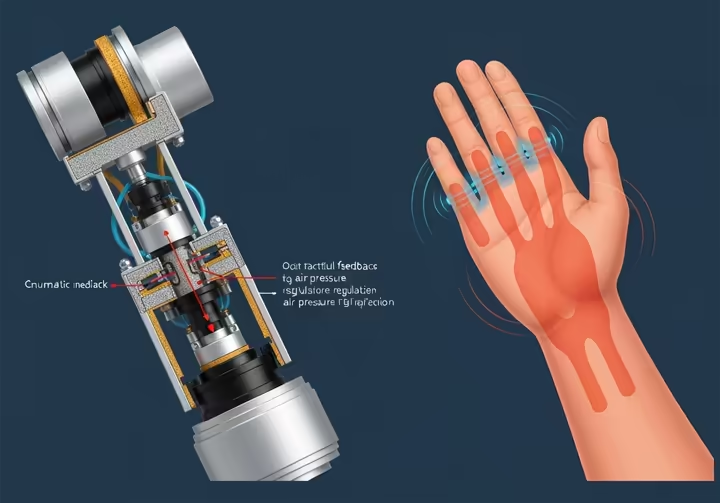
A keypress is registered through Membrane Stress Actuation. A key isn't "pressed" until you apply enough force to cause a catastrophic bubble wall failure, in other words, you pop it. The input is recorded only at the exact moment the polyethylene film tears, converting stored energy into a sound and a feeling.
The Symphony of a Single Pop
That popping sound, the Acoustic Pop Signature (APS), is surprisingly complex. It has three parts. First is a tiny vibration as your finger presses down, a kind of "pre-travel" feedback.
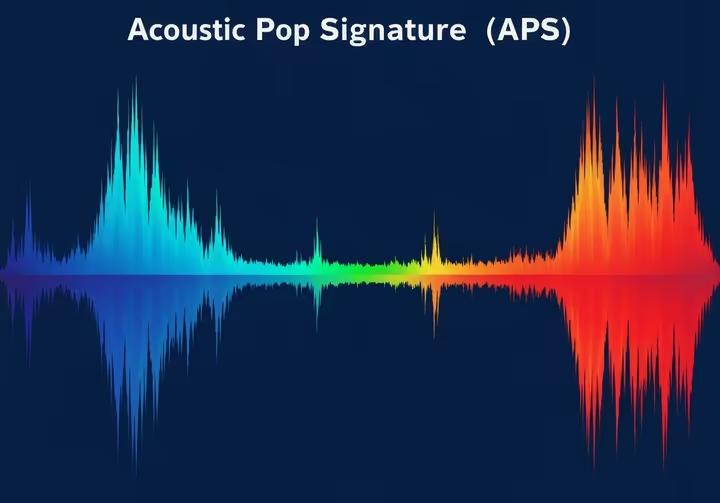
The second part is the main event, the loud "pop" when the bubble ruptures. This is a miniature shock wave that confirms your keystroke. Finally, that shock wave makes nearby bubbles vibrate, creating a subtle echo that adds to the feeling.
Not All Pops Are Created Equal
The kind of bubble wrap you use changes the sound of the pop. Small-cell commercial bubble wrap makes a high-frequency, crisp sound. Large-cell industrial wrap creates a deeper, louder, and more resonant pop.
This experience is surprisingly satisfying, it’s rooted in how our brains work. The combination of the sound and the tactile feeling can trigger an autonomous sensory meridian response (ASMR). This can release feel-good neurohormones like dopamine, making each keystroke a tiny moment of pleasure.
Table 2.1: Comparative Analysis of Acoustic Pop Signatures (APS) for Standard Actuation Sheet Variants
| Actuation Sheet Variant | Polymer Density (g/cm3) | Optimal Cell Pressurization (kPa) | Fundamental Frequency (Hz) | Peak Sound Pressure Level (dB) | Decay Rate (dB/sec) | Dominant Radiation Mechanism |
|---|---|---|---|---|---|---|
| Class I: Small-Cell Commercial | 0.918 | 105 | 4500 | 55 | 120 | Impulsive |
| Class III: Large-Cell Industrial | 0.925 | 115 | 1200 | 72 | 85 | Balanced Impulsive/Resonant |
| Class V: Mil-Spec Anti-Static | 0.930 | 110 | 2800 | 63 | 100 | Resonant Cascade |
What It's Made Of
The keyboard, officially the Pneumo-Acoustic Transducer, cleverly mixes cheap, disposable materials with durable, high-tech sensors. This lets you enjoy the destructive act of typing without ruining the expensive parts.
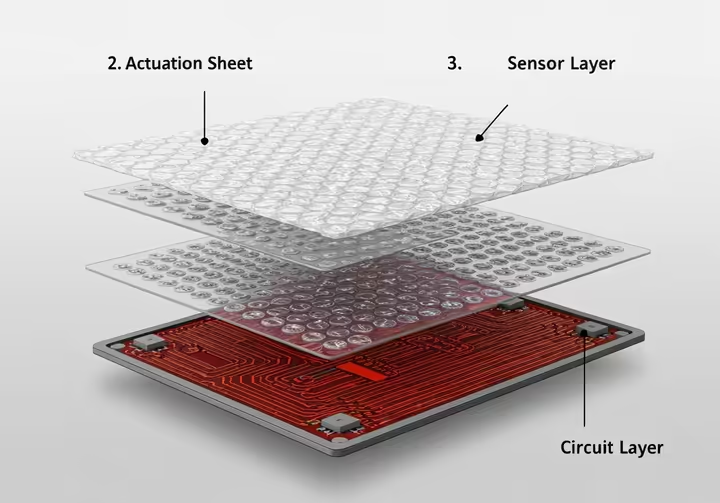
The body is a Polyethylene Unibody Frame, which is a fancy way of saying it's a specially engineered cardboard box. This material is great at absorbing shocks and vibrations. It's also biodegradable, a key part of its lifecycle design.
The main typing surface is the Actuation Sheet, a sheet of low-density polyethylene (LDPE) bubble wrap. A standard Class III sheet has a polymer density of about 0.925g/cm3 and a cell pressure of 115kPa for the best pop. Tiny air channels between the bubbles keep you from accidentally popping adjacent bubbles when you press too hard.
Underneath the bubble wrap is the high-tech Sensor Layer. It's a grid of super-sensitive microphones that listen for the pops. A special processor uses a technique called multilateration, measuring the tiny differences in when the sound reaches each mic, to pinpoint the exact X-Y coordinate of the pop.
And the keycaps? You make them yourself. The letters are hand-drawn onto the top of each bubble with a permanent marker. This gives every keyboard a unique, non-uniform look that enthusiasts love.
A Different Kind of Comfort
This keyboard's comfort isn't just about your wrists, it’s about your brain. Because each pop is permanent, you're forced to think before you type. This mindful approach naturally reduces the total number of keystrokes needed, which can lower the risk of repetitive strain injuries.
The physical act of popping a bubble offers a bit of stress relief, much like the satisfying sounds associated with ASMR. Every pop also gives you clear, loud confirmation that your keypress was registered. This positive feedback loop makes typing more satisfying.
The keyboard's design encourages a dynamic "pecking" motion, which avoids the muscle tension from holding your wrists in one position for too long. Since there are no rigid keycaps, your hands can find a more natural position. The high force needed to pop a bubble is a trade-off that discourages the kind of rapid, low-impact typing that often causes strain.
The Popthusiasts: A Community Divided
A dedicated subculture has formed around this keyboard. These fans, known as "Popthusiasts" or "Bubble-Typists," gather online to discuss their shared passion. They value acoustic purity, tactile satisfaction, and the art of temporary creation.
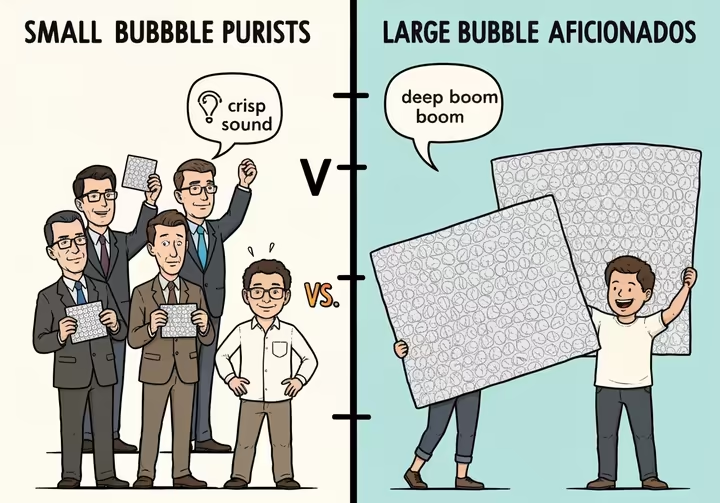
At the center of the community is a fierce debate called the Great Schism, the conflict between Small Bubble Purists and Large Bubble Aficionados. The Small Bubble Purists argue that a higher density of small bubbles offers a more responsive and nuanced typing experience for greater speed and precision. In contrast, the Large Bubble Aficionados care more about the impact of each pop, preferring industrial-grade sheets for their loud, low-frequency sound.
Other debates keep the community lively, like the "Fresh Sheet" versus "Worn-In" argument. Fresh Sheet fans believe only a brand-new sheet gives the purest experience. The Worn-In crowd claims that a partially used sheet develops a more interesting feel, a phenomenon they call "matrix mellowing."
Getting Started: Setup and Calibration
Setting up your keyboard is a ritual that requires care and a quiet space. First, find a room with an ambient noise level like a recording studio (a Noise Criteria rating of 15 or less). This prevents stray sounds from triggering phantom keypresses.

Next, gently place the Actuation Sheet onto the sensor mat, making sure the rows of bubbles are perfectly aligned with the microphone grid. Smooth it out with a soft cloth. Keep a few extra sheets handy, since accidents happen.
Now it's time to apply the letters. Using the official PT-7B permanent marker, carefully write a character on top of each bubble. You'll need a steady hand, and the ink needs 30 minutes to dry.
Finally, you must calibrate the system. To do this, pop the four corner bubbles one by one, starting at the top-left and moving clockwise. This teaches the sensor where the boundaries are.
Keeping It Popping: Fixes and Maintenance
The keyboard embraces its temporary nature, but some issues can be fixed. A single popped bubble, or Spontaneous Key Deflation, can be repaired. You'll need to seal the hole with a small piece of tape, then carefully cut out a donor bubble from another sheet and graft it over the repaired area.
If the keyboard registers the wrong letters, you're likely experiencing Acoustic Mis-Triangulation. This is usually caused by a noisy environment. Try re-calibrating in a quieter room or placing the keyboard on a surface that dampens vibrations.
The biggest event is the Total Matrix Failure Event (TMFE), which happens when you've popped every single bubble. This isn't a failure, it's the successful completion of the sheet's lifecycle, a sign of a project finished. Simply peel off the used sheet, recycle it, and install a fresh one to start a new creative cycle.
Works cited
- How to Develop Your UX Design Philosophy - UXmatters, https://www.uxmatters.com/mt/archives/2022/04/how-to-develop-your-ux-design-philosophy.php
- The 6 key UX design principles to follow - Falmouth University, https://www.falmouth.ac.uk/news/6-key-ux-design-principles-follow
- What core UX principles and theories do you always invoke in your Web Design work?, https://www.reddit.com/r/userexperience/comments/scm9ly/what_core_ux_principles_and_theories_do_you/
- www.britannica.com, https://www.britannica.com/technology/haptic-technology#:~:text=Haptic%20technology%20originated%20in%20the,with%20vision%20and%20hearing%20impairments.
- Haptic technology - Wikipedia, https://en.wikipedia.org/wiki/Haptic_technology
- A BRIEF HISTORY OF HAPTICS TECHNOLOGY - WordPress.com, https://hapticstech.wordpress.com/a-brief-history/
- Tactile Feedback in Design - Number Analytics, https://www.numberanalytics.com/blog/tactile-feedback-design-technology
- Difference Between Haptic and Tactile Feedback - Flatirons Development, https://flatirons.com/blog/haptic-vs-tactile-feedback/
- Physics, and the bursting of a bubble | by Kevin Shi | Medium, https://medium.com/@providence641/physics-and-the-bursting-of-a-bubble-1d33b137a288
- Acoustical observation of bubble oscillations induced by bubble ..., https://link.aps.org/doi/10.1103/PhysRevE.75.041601
- Why do bubbles make a noise when they pop? : r/askscience - Reddit, https://www.reddit.com/r/askscience/comments/1x93qw/why_do_bubbles_make_a_noise_when_they_pop/
- Why do bubbles make a sound? - Physics Stack Exchange, https://physics.stackexchange.com/questions/127583/why-do-bubbles-make-a-sound
- Industrial Acoustic Terms and Abbreviations Glossary - SVI BREMCO, https://svi-bremco.com/blog/industrial-acoustic-glossary/
- Pop Science: The Acoustics of Bubbles - Acentech, https://www.acentech.com/resources/pop-science-the-acoustics-of-bubbles/
- Glossary of Terms - Acoustics First, https://acousticsfirst.com/glossary-of-sound-terms.htm
- The Psychology of ASMR: Unraveling the Science Behind Relaxation and Euphoria | by Noor Murtaza | The Thinkers Point | Medium, https://medium.com/the-thinkers-point/the-psychology-of-asmr-unraveling-the-science-behind-relaxation-and-euphoria-cfbaba042ada
- ASMR: Benefits and Emerging Research - Healthline, https://www.healthline.com/health/autonomous-sensory-meridian-response
- Polyethylene - Wikipedia, https://en.wikipedia.org/wiki/Polyethylene
- Polymers - MSU chemistry, https://www2.chemistry.msu.edu/faculty/reusch/virttxtjml/polymers.htm
- 12 things you need to know to avoid buying the wrong pressure sensor, https://www.sensorsone.com/how-to-create-a-list-of-specification-parameters-for-a-pressure-sensor/
- Microphone array - Wikipedia, https://en.wikipedia.org/wiki/Microphone_array
- Noise localization using a low-cost microphone array - Gfai Tech, https://www.gfaitech.com/fileadmin/gfaitech/documents/publications/english/Internoise-Garcia-Alloza-NoiseLocalization-lowcost-MicrophoneArray-2019.pdf
- A Planer Moving Microphone Array for Sound Source Localization - MDPI, https://www.mdpi.com/2076-3417/15/12/6777
- www.cmd-ltd.com, https://www.cmd-ltd.com/advice-centre/ergonomics/ergonomic-typing-at-home/#:~:text=Adjust%20your%20keyboard%20and%20chair,keyboard%20or%20raise%20your%20chair.
- Proper Typing Posture - Goldtouch, https://www.goldtouch.com/proper-typing-posture/
- Risk Management & Safety Office Ergonomics of Alternative Keyboards - Texas State University, https://gato-docs.its.txst.edu/jcr:539b2954-119b-41cc-bb48-c36dda90a4ed/ergo_alt_kybds.pdf/
- Why do we find certain clicks and other sounds "satisfying"? : r/askscience - Reddit, https://www.reddit.com/r/askscience/comments/1g736t/why_do_we_find_certain_clicks_and_other_sounds/
- Tactile Feedback Technology - Number Analytics, https://www.numberanalytics.com/blog/tactile-feedback-technology
- Ergonomic keyboard - Wikipedia, https://en.wikipedia.org/wiki/Ergonomic_keyboard
- Alternative Keyboards - CDC stacks, https://stacks.cdc.gov/view/cdc/5178/cdc_5178_DS1.pdf?
- Hobbies groups - Meetup, https://www.meetup.com/topics/hobbies/
- Essential Interactive Hobby Forums for Creative Minds -... - Strikingly, https://www.strikingly.com/blog/posts/essential-interactive-hobby-forums-creative-minds
- Find Hobby Groups That Match Your Interests and Goals - Odd Circles, https://www.oddcircles.com/blog/post/find-hobby-groups-that-match-your-interests-and-goals
- 5 Best Online Community Examples - GroupApp, https://www.group.app/blog/online-community-examples/
- 5 Case Studies of Successful Online Community Building Platforms | Socially Blog, https://socially.so/blog/5-case-studies-of-successful-online-community-building-platforms
- Glossary of Acoustical Terms, https://www.techniconacoustics.com/resource-center/glossary-acoustical-terms/
- Creating an Electronics Starter Kit - DigiKey, https://www.digikey.com/en/maker/blogs/2024/creating-an-electronics-starter-kit
- Electronics Assembly - SparkFun Learn, https://learn.sparkfun.com/tutorials/electronics-assembly/the-steps
- Tips for Troubleshooting Common Electronics Laboratory Equipment Issues - Jlab Export, https://jlabexport.com/blogs/tips-for-troubleshooting-common-electronics-laboratory-equipment-issues/